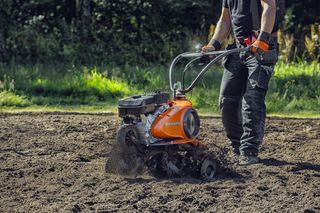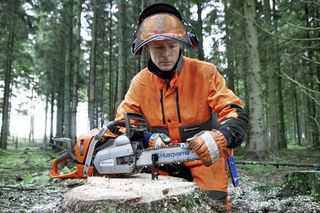
Getting started with a garden tiller
Garden tillers are used to cultivate soil and allow gardeners to prepare vegetable patches, flower beds and level out uneven land. Such tasks can be quite strenuous and tedious when done manually, however Husqvarna’s new TR430 Rear tine tiller is a perfect addition for home and land owners wanting to achieve lush gardens in an easier and effective way. Getting started with your garden tiller can be intimidating at first, but by following the tips below you can achieve excellent results in growing healthy and productive plants.
Garden tillers have become a great tool for many gardeners and landscapers, taking pressure away from the excessively labour intensive way of cultivating soil. According to experts, cultivating soil is extremely necessary when preparing gardens to increase nutrients for healthy and thriving crops.
The main element of a garden tiller are the sharp metal blades that rotate and dig into the soil, called tines. The tines on the new Husqvarna TR430 tiller are curved in complementary directions and counter rotate. Two of the four blades point in towards the tiller, while the other blades point in the opposing direction. This inverted design allows for deeper excavating and helps prevent organic material from accumulating on the blade, creating a superior and efficient job every time.
Prior to operating a lawn tiller, it is essential to take the density of the soil into consideration in order to achieve the best results. While Husqvarna tillers work effectively on packed earth and older lawns, watering the area and adding moisture a few days prior to the job, will make tilling easier. In saying this, it is important to ensure the soil is not too wet, as it can clump and make it challenging to break up the dirt. Safety also needs to be considered prior to using a tiller. Protective gear such as eye wear and sturdy boots should always be worn in order to prevent injury. As the operator, you should always keep a firm grip on the handles and exercise extreme caution when reversing the tiller, making sure to be aware of your footing near the rotating parts. The tiller should only be operated in ample daylight to minimise the risk of injury.
In order to get started, prepare the area by removing debris such as rocks, branches and thick weeds. You will then need to decide on the right depth that you would like to dig. You should avoid deep excavation straight away on soil that has not been tilled for some time and is hard and compact. Rather, you should use a shallow depth to begin with and progressively get deeper. Also avoid pushing down on the handle bars in an attempt to dig deeper, as it can hinder results and place unwanted strain on the body. Once an appropriate depth has been set, begin by engaging the tiller tines and push the tiller in a parallel pass. Continually till the soil, adjusting the depth if you wish, until you are able to mix nutrients into the soil completely. You should give this material a few days to enrich the soil before you continue, then use the tiller at a medium-depth to aerate the soil and properly blend the nutrients. These actions ensure that the soil is adequately prepared to a flourishing and thriving garden.
Whether you’re an experienced gardener or simply doing some maintenance, using a lawn tiller can save hours of work and stress on the body. Put down the shovel and pick up the TR430 rear tine tiller to ensure that your garden blossoms with the nutrients it needs.









